
Intel Pentium Silver J5005 Benchmark, Test and specs
Last updated:
The Intel Pentium Silver J5005 was released in Q4/2017 and has 4 cores. The processor can process 4 threads simultaneously and uses a mainboard with the socket BGA 1090. In the Geekbench 5 benchmark, the Intel Pentium Silver J5005 achieved a result of 482 points (single-core) or 1,655 points (multi-core).
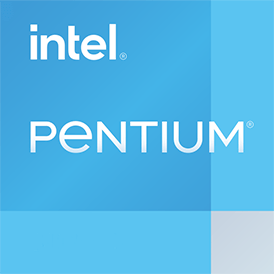
| Name: | Intel Pentium Silver J5005 |
|---|---|
| Family: | Intel Pentium (150) |
| CPU group: | Intel Pentium J5000/N5000 (4) |
| Architecture: | Gemini Lake |
| Segment: | Mobile |
| Generation: | 9 |
| Predecessor: | -- |
| Successor: | -- |
CPU Cores and Base Frequency
The Intel Pentium Silver J5005 has 4 cores. The clock frequency of the Intel Pentium Silver J5005 is 1.50 GHz (2.80 GHz). An initial performance assessment can be made using the number of CPU cores.
| CPU Cores / Threads: | 4 / 4 |
|---|---|
| Core architecture: | normal |
| Cores: | 4x |
| Hyperthreading / SMT: | No |
|---|---|
| Overclocking: | No |
| Frequency: | 1.50 GHz |
| Turbo Frequency (1 Core): | 2.80 GHz |
| Turbo Frequency (4 Cores): | 2.70 GHz |
Internal Graphics
The Intel Pentium Silver J5005 has an integrated graphics that the system can use to efficiently play back videos. The Intel Pentium Silver J5005 has the Intel UHD Graphics 605 installed, which has 18 streaming multiprocessors (144 shaders).
| GPU name: | Intel UHD Graphics 605 |
|---|---|
| GPU frequency: | 0.25 GHz |
| GPU (Turbo): | 0.80 GHz |
| Compute units: | 18 |
| Shader: | 144 |
| Hardware Raytracing: | No |
| Release date: | Q4/2017 |
| Max. displays: | 3 |
|---|---|
| Generation: | 9.5 |
| Direct X: | 12 |
| Technology: | 14 nm |
| Max. GPU Memory: | 8 GB |
| Frame Generation: | No |
Hardware codec support
Processors with integrated graphics can process video codecs faster. Support for modern codecs can significantly increase system efficiency during video playback.
| h265 / HEVC (8 bit): | Decode / Encode |
|---|---|
| h265 / HEVC (10 bit): | Decode / Encode |
| h264: | Decode / Encode |
| VP8: | Decode / Encode |
| VP9: | Decode / Encode |
| AV1: | No |
|---|---|
| AVC: | Decode / Encode |
| VC-1: | Decode |
| JPEG: | Decode / Encode |
Memory & PCIeThe Intel Pentium Silver J5005 supports a maximum of 8 GB memory. Depending on the mainboard, the processor can use a maximum of 2 (Dual Channel) memory channels. This results in a maximum bandwidth of the main memory of 38.4 GB/s. |
|
| Memory type: | Memory bandwidth: |
|---|---|
| LPDDR4-2400 DDR4-2400 | 38.4 GB/s 38.4 GB/s |
| Max. Memory: | 8 GB |
| Memory channels: | 2 (Dual Channel) |
| ECC: | No |
| PCIe: | 2.0 x 6 |
| PCIe Bandwidth: | 3.0 GB/s |
Thermal ManagementThe Intel Pentium Silver J5005 has a TDP of 10 W. Based on the TDP, the system manufacturer can and must adapt the cooling solution to the processor. |
|
|---|---|
| TDP (PL1 / PBP): | 10 W |
| TDP (PL2): | -- |
| TDP up: | -- |
| TDP down: | -- |
| Tjunction max.: | 105 °C |
Technical details
Modern production reduces the waste heat of a processor and increases its efficiency. The Intel Pentium Silver J5005 is made in 14 nm and has 4.00 MB cache.
| Technology: | 14 nm |
|---|---|
| Chip design: | Monolithic |
| Socket: | BGA 1090 |
| L2-Cache: | -- |
| L3-Cache: | 4.00 MB |
| AES-NI: | Yes |
| Operating systems: | Windows 10, Windows 11, Linux |
| Virtualization: | VT-x, VT-x EPT, VT-d |
|---|---|
| Instruction set (ISA): | x86-64 (64 bit) |
| ISA extensions: | SSE4.1, SSE4.2 |
| Release date: | Q4/2017 |
| Release price: | 95 $ |
| Part Number: | -- |
| Documents: | Technical data sheet |
Rate this processor
Benchmark results

The benchmark results for the Intel Pentium Silver J5005 have been carefully checked by us. We only publish benchmark results that have been created by us or that have been submitted by a visitor and then checked by a team member. All results are based on and fullfill our benchmark guidelines.
Geekbench 5, 64bit (Single-Core)
Geekbench 5 is a cross plattform benchmark that heavily uses the systems memory. A fast memory will push the result a lot. The single-core test only uses one CPU core, the amount of cores or hyperthreading ability doesn't count.

|
Intel Core i3-2100T
2C 4T @ 2.50 GHz |
||

|
Intel Core i5-4200Y
2C 4T @ 1.90 GHz |
||

|
Intel Core i5-4210Y
2C 4T @ 1.90 GHz |
||
|
|
Intel Pentium Silver J5005
4C 4T @ 2.80 GHz |
||
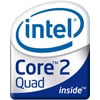
|
Intel Core 2 Quad Q9700
4C 4T @ 3.20 GHz |
||

|
Intel Celeron J4125
4C 4T @ 2.70 GHz |
||
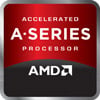
|
AMD A12-9700P
4C 4T @ 3.40 GHz |
||
Geekbench 5, 64bit (Multi-Core)
Geekbench 5 is a cross plattform benchmark that heavily uses the systems memory. A fast memory will push the result a lot. The multi-core test involves all CPU cores and taks a big advantage of hyperthreading.

|
Intel Core i3-7100H
2C 4T @ 3.00 GHz |
||

|
Intel Core i5-6360U
2C 4T @ 3.00 GHz |
||

|
Intel Core i3-4360T
2C 4T @ 3.20 GHz |
||
|
|
Intel Pentium Silver J5005
4C 4T @ 2.70 GHz |
||

|
Qualcomm Snapdragon 730G
8C 8T @ 2.20 GHz |
||

|
Qualcomm Snapdragon 730
8C 8T @ 2.20 GHz |
||

|
Intel Core i5-5257U
2C 4T @ 3.10 GHz |
||
Geekbench 6 (Single-Core)
Geekbench 6 is a benchmark for modern computers, notebooks and smartphones. What is new is an optimized utilization of newer CPU architectures, e.g. based on the big.LITTLE concept and combining CPU cores of different sizes. The single-core benchmark only evaluates the performance of the fastest CPU core, the number of CPU cores in a processor is irrelevant here.

|
Intel Celeron N4020
2C 2T @ 2.80 GHz |
||
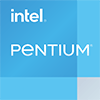
|
Intel Pentium B970
2C 2T @ 2.30 GHz |
||

|
Intel Celeron J4005
2C 2T @ 2.70 GHz |
||
|
|
Intel Pentium Silver J5005
4C 4T @ 2.80 GHz |
||

|
Intel Core i3-2100T
2C 4T @ 2.50 GHz |
||

|
Intel Core i3-2348M
2C 4T @ 2.30 GHz |
||

|
Intel Core i3-2350M
2C 4T @ 2.30 GHz |
||
Geekbench 6 (Multi-Core)
Geekbench 6 is a benchmark for modern computers, notebooks and smartphones. What is new is an optimized utilization of newer CPU architectures, e.g. based on the big.LITTLE concept and combining CPU cores of different sizes. The multi-core benchmark evaluates the performance of all of the processor's CPU cores. Virtual thread improvements such as AMD SMT or Intel's Hyper-Threading have a positive impact on the benchmark result.

|
Intel Core i3-3220
2C 4T @ 3.30 GHz |
||

|
Intel Core i3-3225
2C 4T @ 3.30 GHz |
||

|
Intel Core i7-2640M
2C 4T @ 2.80 GHz |
||
|
|
Intel Pentium Silver J5005
4C 4T @ 2.70 GHz |
||

|
Intel Pentium G3250
2C 2T @ 3.20 GHz |
||

|
Intel Core i5-3320M
2C 4T @ 2.60 GHz |
||

|
MediaTek MT8183
8C 8T @ 2.00 GHz |
||
Cinebench R20 (Single-Core)
Cinebench R20 is the successor of Cinebench R15 and is also based on the Cinema 4 Suite. Cinema 4 is a worldwide used software to create 3D forms. The single-core test only uses one CPU core, the amount of cores or hyperthreading ability doesn't count.

|
Intel Celeron N5100
4C 4T @ 2.80 GHz |
||

|
Intel Pentium Gold 4417U
2C 4T @ 2.30 GHz |
||

|
Qualcomm Snapdragon Microsoft SQ3
8C 8T @ 3.00 GHz |
||
|
|
Intel Pentium Silver J5005
4C 4T @ 2.80 GHz |
||

|
Intel Celeron N4500
2C 2T @ 2.80 GHz |
||

|
Intel Pentium Silver J5040
4C 4T @ 3.20 GHz |
||

|
AMD A9-9425
2C 2T @ 3.70 GHz |
||
Cinebench R20 (Multi-Core)
Cinebench R20 is the successor of Cinebench R15 and is also based on the Cinema 4 Suite. Cinema 4 is a worldwide used software to create 3D forms. The multi-core test involves all CPU cores and taks a big advantage of hyperthreading.

|
Intel Core i7-7600U
2C 4T @ 3.90 GHz |
||

|
Intel Celeron J4125
4C 4T @ 2.70 GHz |
||

|
AMD Athlon II X4 860K
4C 4T @ 4.00 GHz |
||
|
|
Intel Pentium Silver J5005
4C 4T @ 2.70 GHz |
||

|
AMD A8-3870K
4C 4T @ 3.10 GHz |
||

|
Intel Core i7-3520M
2C 4T @ 3.40 GHz |
||

|
AMD A10-7800
4C 4T @ 3.70 GHz |
||
iGPU - FP32 Performance (Single-precision GFLOPS)
The theoretical computing performance of the internal graphics unit of the processor with simple accuracy (32 bit) in GFLOPS. GFLOPS indicates how many billion floating point operations the iGPU can perform per second.

|
Intel Core i5-3610ME
Intel HD Graphics 4000 @ 0.95 GHz |
||

|
MediaTek Dimensity 810
ARM Mali-G57 MP2 @ 0.95 GHz |
||

|
MediaTek Helio G90T
ARM Mali-G76 MP4 @ 0.80 GHz |
||
|
|
Intel Pentium Silver J5005
Intel UHD Graphics 605 @ 0.80 GHz |
||

|
Apple A8X
Apple A8X @ 0.45 GHz |
||

|
Intel Core i7-2715QE
Intel HD Graphics 3000 @ 1.20 GHz |
||

|
Intel Core i7-2710QE
Intel HD Graphics 3000 @ 1.20 GHz |
||
Blender 3.1 Benchmark
In the Blender Benchmark 3.1, the scenes "monster", "junkshop" and "classroom" are rendered and the time required by the system is measured. In our benchmark we test the CPU and not the graphics card. Blender 3.1 was presented as a standalone version in March 2022.

|
Intel Core i5-4288U
2C 4T @ 2.60 GHz |
||

|
Intel Core i3-1005G1
2C 4T @ 3.40 GHz |
||

|
Intel Celeron J4125
4C 4T @ 2.70 GHz |
||
|
|
Intel Pentium Silver J5005
4C 4T @ 2.70 GHz |
||

|
Intel Celeron J3455
4C 4T @ 2.20 GHz |
||

|
Intel Pentium Silver N5030
4C 4T @ 2.40 GHz |
||

|
AMD A9-9425
2C 2T @ 3.10 GHz |
||
Estimated results for PassMark CPU Mark
Some of the CPUs listed below have been benchmarked by CPU-monkey. However the majority of CPUs have not been tested and the results have been estimated by a CPU-monkey’s secret proprietary formula. As such they do not accurately reflect the actual Passmark CPU mark values and are not endorsed by PassMark Software Pty Ltd.

|
Qualcomm Snapdragon 662
8C 8T @ 2.00 GHz |
||

|
Intel Core i3-6100TE
2C 4T @ 2.70 GHz |
||

|
AMD A10-7350B
4C 4T @ 2.70 GHz |
||
|
|
Intel Pentium Silver J5005
4C 4T @ 2.70 GHz |
||

|
Intel Core i3-4330T
2C 4T @ 3.00 GHz |
||
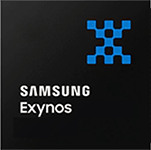
|
Samsung Exynos 8895
8C 8T @ 2.30 GHz |
||

|
Intel Core i7-4578U
2C 4T @ 3.00 GHz |
||
Cinebench R15 (Single-Core)
Cinebench R15 is the successor of Cinebench 11.5 and is also based on the Cinema 4 Suite. Cinema 4 is a worldwide used software to create 3D forms. The single-core test only uses one CPU core, the amount of cores or hyperthreading ability doesn't count.

|
Intel Core i3-4158U
2C 4T @ 2.00 GHz |
||
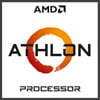
|
AMD Athlon X4 835
4C 4T @ 3.40 GHz |
||
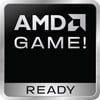
|
AMD Phenom II X6 1055T
6C 6T @ 3.30 GHz |
||
|
|
Intel Pentium Silver J5005
4C 4T @ 2.80 GHz |
||

|
AMD A9-9425
2C 2T @ 3.70 GHz |
||

|
Intel Core i3-5005U
2C 4T @ 2.00 GHz |
||

|
Intel Core M-5Y10
2C 4T @ 2.00 GHz |
||
Cinebench R15 (Multi-Core)
Cinebench R15 is the successor of Cinebench 11.5 and is also based on the Cinema 4 Suite. Cinema 4 is a worldwide used software to create 3D forms. The multi-core test involves all CPU cores and taks a big advantage of hyperthreading.

|
AMD Phenom II X4 945
4C 4T @ 3.00 GHz |
||

|
AMD Phenom II X4 B95
4C 4T @ 3.00 GHz |
||

|
AMD A10-9700
4C 4T @ 3.50 GHz |
||
|
|
Intel Pentium Silver J5005
4C 4T @ 2.70 GHz |
||

|
Intel Core i7-6500U
2C 4T @ 2.80 GHz |
||

|
AMD Phenom II X4 940
4C 4T @ 3.00 GHz |
||

|
AMD A8-3870K
4C 4T @ 3.10 GHz |
||
Benchmarks

Geekbench 5 (SC)
2,488 entries
2,488 entries

Geekbench 5 (MC)
2,461 entries
2,461 entries

Geekbench 6 (SC)
1,754 entries
1,754 entries

Geekbench 6 (MC)
1,702 entries
1,702 entries

Cinebench R20 (SC)
656 entries
656 entries

Cinebench R20 (MC)
604 entries
604 entries

FP32 SP (iGPU)
2,026 entries
2,026 entries

Blender 3.1 Benchmark
212 entries
212 entries
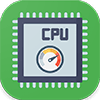
PassMark CPU-Mark
2,391 entries
2,391 entries

Cinebench R15 (SC)
1,106 entries
1,106 entries

Cinebench R15 (MC)
1,101 entries
1,101 entries

Cinebench R11.5 (SC)
825 entries
825 entries

Cinebench R11.5 (MC)
836 entries
836 entries

Cinebench R11.5 iGPU
383 entries
383 entries
Description of the processor
The Intel Pentium J5005 is a processor with 4 cores of the Intels "Gemini Lake architecture and manufactured in the 14-nanometer process. The supported base "BGA 1090" reveals us that the Intel Pentium J5005 can only be installed soldered solely.The processor is used in some mini PCs, such as the Intels own Intel Nuc7pjyh or even the Gigabyte Brix GB-BLPD-5005, but also the mainboard ASRock J5005-ITX manufactured by ASRock is very interesting. Namely, the processor is passively cooled and is ideal for use in a completely passively cooled self-building NAS.
The clock of the 4 processor cores of the Intel Pentium J5005 is 1.50 Gigahertz. In turbomodus, the cycle at single core utilization increases up to 2.80 gigahertz and when utilizing all 4 cores also to 2.70 gigahertz.
Another argument that the Intel Pentium J5005 fits well into a NAS is the low TDP of only 10 watts. This indicates that power consumption at the CPU is not too high.
With the integrated graphics unit "Intel UHD Graphics 605" up to 3 monitors can be supplied with a picture simultaneously. But it is mainly supported what the device is installed in which the Intel Pentium J5005 is supported. The graphics unit itself supports Microsofts DirectX in version 12.1 and also the decoding of all important video codecs in hardware is supported. For example, one could use a device with the Intel Pentium J5005 as a media player, for example. Here you can very much recommend the software "Libreelec". It is a stand-alone version of the very popular software Kodi based on a Linux substructure.
The Intel Pentium J5005 appeared in the fourth quarter of 2017.
Popular comparisons
back to index




